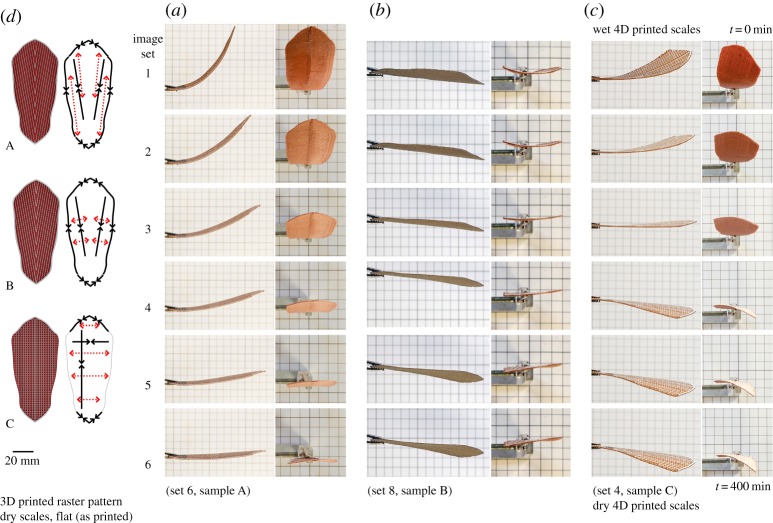Figure 6.
The 4D printed artificial scale's distinct shape bending deformation, of three different bilayer architectures A, B and C (d), upon desiccation. All three scales are clamped at the basal region and present a continuous, single-phase, actuation bending of predominantly single-axis curvature change. Each sample demonstrates a differentiated shape-change deformation based on the bilayer architecture (d). Starting fully wet (t = 0, image set 1), sample A (a) presents notable longitudinal curvature with negligible transversal curvature, sample B (b) presents the opposite condition with notable transversal curvature with negligible longitudinal curvature, sample C (c) presents curvature change at an approximate 45° from the longitudinal axis, resulting in a twist. All samples demonstrate a single actuation stage (image sets 1–6) with a continues curvature change along a single primary axis: sample A (a) presents continues curvature change along longitudinal axis, sample B (b) along the transversal axis while sample's C (c) deformation may be described as a continuous bidirectional ‘twist’ deformation. Since the objective is to achieve the pine scale's bi-axial two-stage motion, as per $1.2 (cf. figure 1m), the consistent single-axis curvature change across the entire scale, achieved by these three samples (A–C), is not suitable for the required performance goals. (Online version in colour.)

